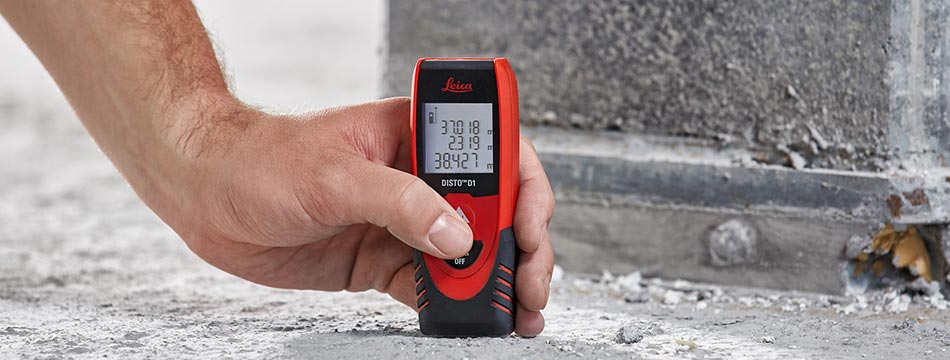
The process of carrying out accurate measurements in an area has always traditionally been performed using conventional tape measures, devices known for being a bit fiddly and usually requiring more than one person to operate.
Although by no means new to the test equipment market, the laser distance meter is a tool that is becoming increasingly adopted by professionals carrying out calculations of distance. Everyone from architects to estate agents and construction workers to building surveyors are starting to use these devices on a daily basis as a much more effective method of testing distance levels.
How Do Laser Distance Meters Work?
If you've never even touched a laser distance meter before, you may well be wondering this very question. At the most basic level, a laser distance meter work by shining a bright, visible laser onto a target. This laser emits an ultrasonic frequency that bounces off the area where the laser hits; the meter than calculates how long it takes for this frequency to return to a built-in receiver and works out the exact distance based on this information.
Basically it works using the standard equation for measuring distance: distance = speed x time. The laser distance meter is able to calculate the speed and time it takes for an ultrasonic frequency to return to the receiver, multiplies these two values together and then calculates a distance measurement based upon this information.
By use of even more complex equations, some laser meters also have the ability to calculate the volume or area of something by using the calculated distance value.
The measuring abilities of a laser meter vary depending on the make and model of the tester in question. Higher grade devices generally include higher quality lasers, allowing it to travel for a further distance and return to the unit. In direct comparison, lower-grade meters tend to have lasers best suited to smaller measurements.
Where Can Laser Distance Meters Be Used?
A more accurate question to ask is: where can't they be used? Well the most obvious place where they generally can't be used is within explosive environments, as the laser could cause an ignition. Other than that these devices are suitable for use in carrying out distance measurements in everywhere from huge factories to outside on a construction site.
Generally most laser distance meters carry out measurement with accuracy of 99.5%, meaning all generated readings will easily be accurate enough to provide information to others, cut something to specific lengths or for various other applications.
Most common distance meters are primarily meant for use indoors; when out in direct sunlight, the laser might be hard to pinpoint and can cause difficulty when measuring. To counteract this several manufacturers - including the popular Leica - have created devices that are certified for use outdoors. These are most ideally suited to construction and building professionals who need an effective way of calculating distance when working on jobs that are exposed to the environment outside.
Here's a list of applications where laser distance meters prove extremely effective:
- Building surveying - Ideal for estate agents, architects and building surveyors, these devices allow the user to calculate the exact distances of a property in order to provide information to potential buyers and to make informed decisions on the best way to perform work on a property. You can carry out measurements of rooms to ensure fully square design, map out parking lots, verify construction sites and much more by using these devices.
- Electricians, HVAC and other installation professionals can use these devices to measure lengths of cable, measure the height alarm systems are installed at, measure distances to install emergency lighting, sprinklers and fire extinguishers in order with rules and regulations and can even measure water levels in fire suppression tanks
- Plumbers can use laser distance meters to determine distance between pumps, determine distance between pump lines and piping runs and can measure condensation lines
- Photographers, video, audio and theatre professionals can use a distance meter to calculate exactly how setups should be placed for optimal use.
These are just a few examples of how these devices are beneficial. So why haven't you bought yourself a laser distance meter yet? If you're interested in an extremely effective way of measuring distance, be sure to check out our range of distance meters available here on Tester.co.uk.


